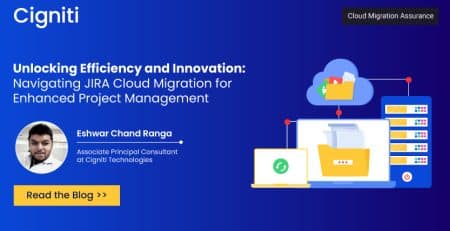Top 6 Security Traps to Avoid in JIRA Implementation
|
Listen on the go!
|
According to Gartner, JIRA is still one of the most popular application lifecycle management (ALM) technologies in many enterprises, with a rating of 4.4 out of 5 for its features. Determining an “issue permission” enabled with the proper security constraints and balancing its project access control is always a difficult challenge in an enterprise JIRA setup. To build successful JIRA security measures, organizations must consider several aspects during the defining phase and create a reusable scheme that combines best practices for JIRA.
In this blog, we’ll address some frequently asked questions about JIRA-issue permission setups that our JIRA consulting team receives from various clients. While there isn’t a single best-fit solution that works for every organization, it is possible to avoid costly errors by clarifying some presumptions before developing your use case.
1. What is the purpose of defining a JIRA security requirement?
Even though JIRA is set up to handle project access and issue permissions using standard issue permissions, many businesses continue to doubt the necessity of the JIRA security standards. Every project has different security requirements, and no thorough investigation is carried out before specifying issue permissions, external user access, and project access controls. Because of this, every business must evaluate every use case to establish its unique security needs. Here are a few undesirable specifications or results that should be avoided.
- The limits on JIRA project access control, such as who is allowed access and who has to be denied access, are not specified.
- There are no project classification rules to identify the sensitive and private information in the project and specify the limitations on data visibility.
- There are no comprehensive details on the requirements for restrictions and permissions, such as
- Who can grant what kind of permission, and to what extent?
- Which people or groups should have access to which limited permissions?
- Who must be included in the permissions with restrictions?
- Lack of clear understanding of issue-level security restrictions and their control; no project-level issue-level security guidelines to define issue restrictions
- Lack of definitions and limitations for global permissions. Absence of group classification to determine which group can be set up with what degree of global permissions
- No details on the external users’ policy and its restrictions
2. Have we configured the issue permission scheme effectively?
The effectiveness of each organization’s unique security configuration needs to be reviewed and audited. Most enterprises that issue permissions do not follow adequate security best practices and reusability across projects. Each permission has its capabilities and limits; some of the most frequent errors are shown below.
- Every issue permission is given to “Any Logged in User,” allowing access to the JIRA instance for everyone with access. The permissions are not set up with project access control measures or organizational security constraints.
- The “User” or “Group” has been granted permission to issue. The reusability of the scheme between projects is impacted when teams add users or groups directly with the necessary permission. Increased maintenance efforts result from adding more users or groups to the permissions. In addition, it is not a best practice and increases the danger of user or group dependence.
- Assigning the “Browse Project” permission to “Any Logged-in User,” “User,” or “Group” will allow that user to view project data. This permission directly affects the project’s data visibility and access control.
- Without taking security precautions into account, essential permissions like “Delete and Delete All” are configured and provided to “user,” “group,” or “Any Logged in User,” disregarding all security regulations.
3. Why is our JIRA requiring customization when the default permission scheme is sufficient?
Using JIRA Cloud with the default permissions scheme, which grants all permissions to “Any Logged-in User” without customization, is another rookie error. It affects all JIRA users and projects set up with all permissions, unrestricted by security or access. For more control and usability, it is crucial to tailor a permission scheme early in the implementation process to security needs.
4. Do we need to define roles and responsibilities for JIRA users?
Yes, expanding companies with a large user base with various personas and utilizing a range of project templates fail to manage user access across project roles. Higher or lower-level JIRA access is given to many users in the organization, irrespective of their activities, current roles, levels of usage, and roles. Guidelines for the organizational strategy and RACI for the user permissions controls are absent. Definitions of JIRA project roles, procedures for user access, and a mapping of the permissions capabilities for individual users and groups are required.
5. Do we need multiple schemes for different security restrictions?
That’s not necessarily true; most projects only require a single global default permission scheme if the security requirements are standardized. If it is inappropriate for the worldwide scheme, we can develop a few extra schemes for particular use situations. New use cases emerge as the team expands, providing a variety of business requirements for initiatives. It needs a strategic approach and a security requirements assessment procedure to handle such rapid changes. Increased maintenance efforts resulted from the team’s disregard for best practices, practical JIRA security standards, and using JIRA management based on use cases.
6. Why is governance for an ALM tool necessary to define?
The most frequent query on the necessity of tool governance from enterprises. Due to increased security use cases, teams and organizations experience exponential growth in maintenance activities for their ALM platforms as they expand laterally (by adding more users and projects) and vertically (by adding different roles, issue categories, and project kinds). To properly handle the ALM tool’s process, users, and maintenance, we must recognize the significance of standard governance practices. The manual labor involved in tool implementation, maintenance, and transformation and related costs will skyrocket in the absence of adequate ALM governance. These are some illustrations of inefficient governance procedures that should be avoided when growing a JIRA.
- Undervaluing reviews: Reviews are essential to any governance process since they help identify weaknesses and help close them. Periodic reviews of user management, project roles, global permissions, issue characteristics, and issue permissions are required as part of the JIRA governance process.
- Too many admin users: Allowing many users to have product-admin access without monitoring their actions raises the risk and requires more maintenance. It takes more work to oversee excessive admin users for procedure adherence. Adequate protocols can be devised for administrative responsibilities.
- There is no established audit process: An efficient audit process for the JIRA tool implementation may assess adherence to and adoption of the current procedure, aiding the company in identifying gaps and updating documentation and practices while enhancing tool performance.
- Lack of maintenance governance: As JIRA usage rises, a uniform maintenance procedure is essential to boost utilization effectiveness and minimize manual efforts. JIRA maintenance reports should be published to the management on the scheduled monitoring and control activities. We observed organizations not managing a maintenance backlog with tasks, and JIRA updates worked through an ad hoc request mechanism.
Conclusion
A uniform process, security requirements, maintenance approach, and governance are essential for any organization to scale the installation of JIRA. JIRA best practices should be applied throughout the tool life cycle to enhance security measures, utilization efficiency, and reusability and minimize manual efforts. An ALM tool that is kept up to date will always aid the project team in producing high-quality work.
Cigniti has successfully advised and transformed diverse JIRA enterprise implementations globally. Our JIRA framework methodology is built on 100+ checkpoints, including core tool capabilities, team operations, and industry best practices.
Need help? Schedule a discussion to talk about different use cases and their success stories across problem statements, transformation challenges, team best practices, complex migrations, and integrations.



Leave a Reply